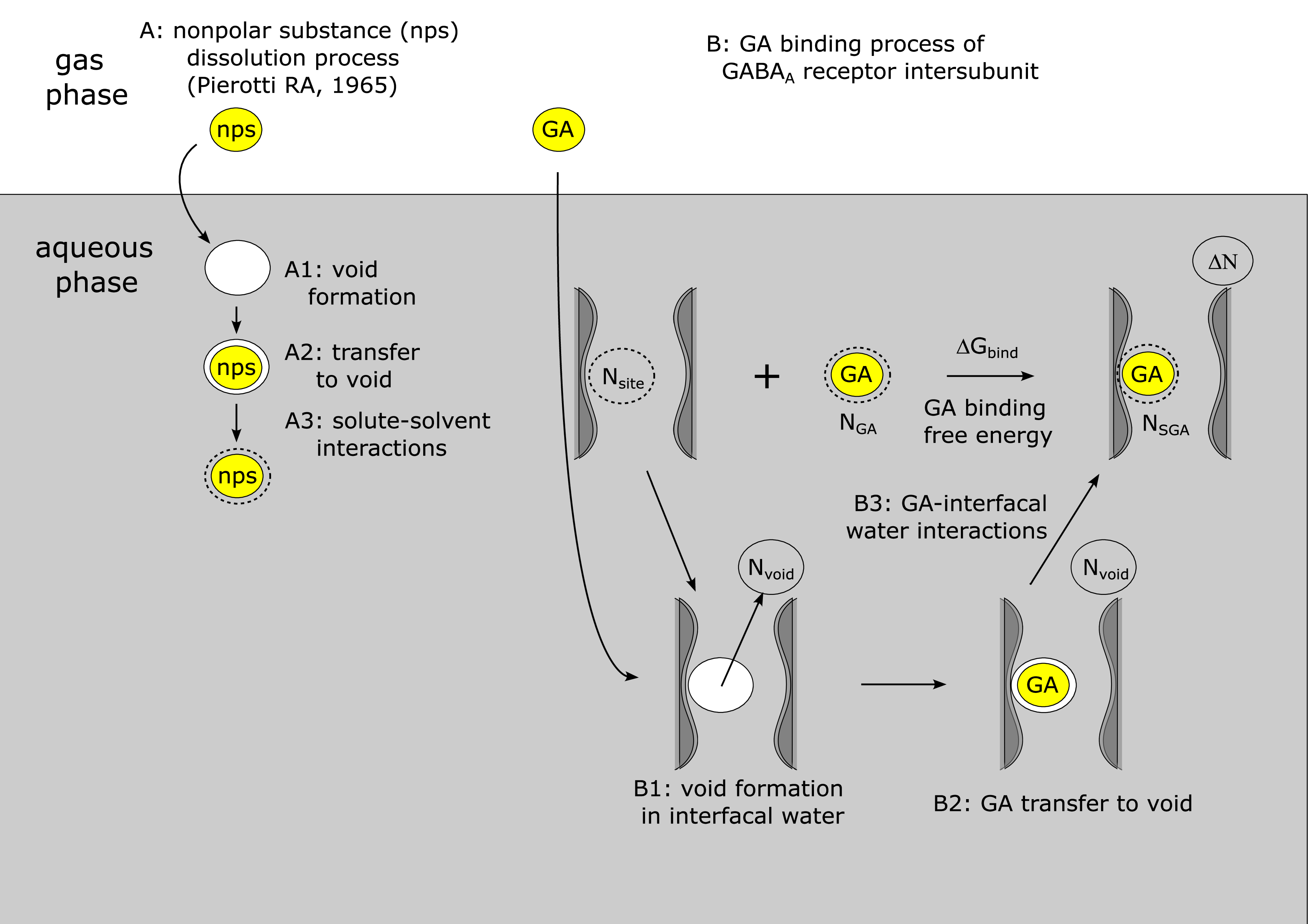1
"General anesthetic binding mode via hydration with weak affinity and molecular discrimination: General anesthetic dissolution in interfacial water of the common binding site of GABAA receptor" by Tomoyoshi Seto is published in BPPB as the J-STAGE Advance Publication.
2023 January 25 BPPB
A following article is published as the J-STAGE Advance Publication in "Biophysics and Physicobiology".
Tomoyoshi Seto
"General anesthetic binding mode via hydration with weak affinity and molecular discrimination: General anesthetic dissolution in interfacial water of the common binding site of GABAA receptor"
URL:https://doi.org/10.2142/biophysico.bppb-v20.0005
- Abstract
- The GABAA receptor (GABAAR) is a target channel for the loss of awareness of general anesthesia. General anesthetic (GA) spans a wide range of chemical structures, such as monatomic molecules, barbital acids, phenols, ethers, and alkanes. GA has a weak binding affinity, and the affinity has a characteristic that correlates with the solubility in olive oil rather than the molecular shape. The GA binding site of GABAAR is common to GAs and exists in the transmembrane domain of the GABAAR intersubunit. In this study, the mechanism of GA binding, which allows binding of various GAs with intersubunit selectivity, was elucidated from the hydration analysis of the binding site. Regardless of the diverse GA chemical structures, a strong correlation was observed between the binding free energy and total dehydration number of the binding process. The GA binding free energy was more involved in the binding dehydration and showed molecular recognition that allowed for the binding of various GA structures via binding site hydration. We regarded the GA substitution for the interfacial water molecule of the binding site as a dissolution into the interfacial hydration layer. The elucidation of the GA binding mechanism mediated by hydration at the GABAAR common binding site provides a rationale for the combined use of anesthetics in medical practice and its combination adjustments via drug interactions.





